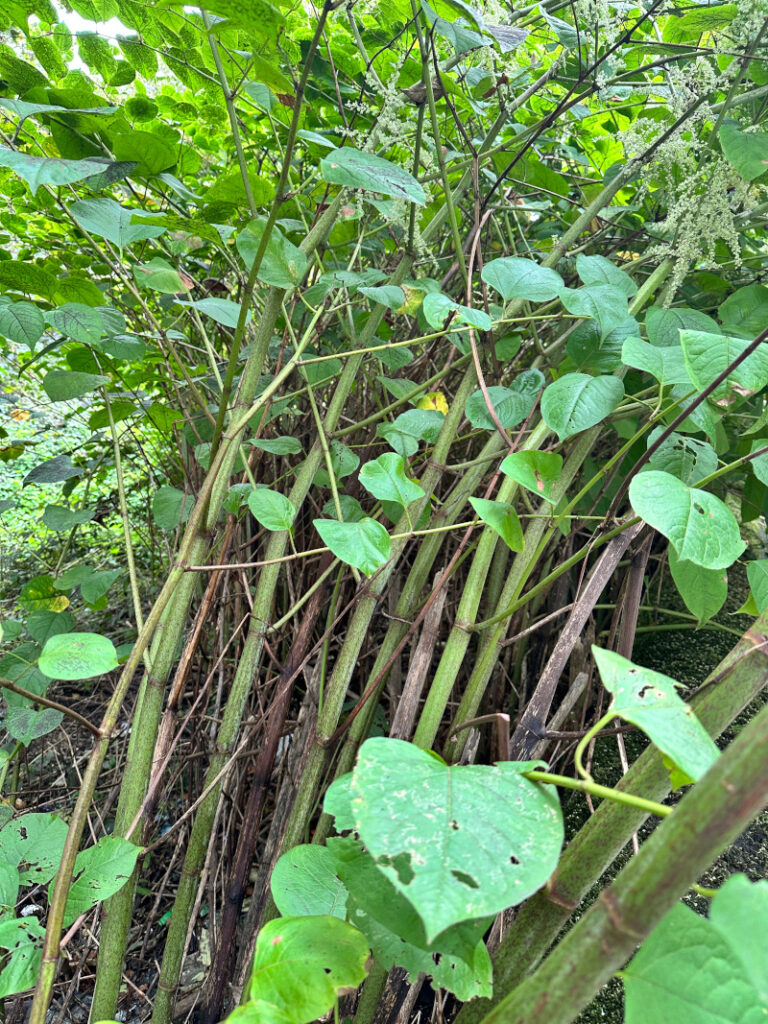As springtime dawns upon the United Kingdom, so does the annual resurgence of Japanese knotweed, heralding concerns among homeowners and commercial clients alike.
With the onset of the growing season, this invasive plant species begins its aggressive growth, posing a significant threat to properties, landscapes and native flora.
Japanese knotweed, formally known as Fallopia Japonica, is a persistent and fast-spreading perennial plant originally from East Asia.
Renowned for its resilient nature, it propagates swiftly through its underground rhizomes and dense clusters of hollow, bamboo-like stems.





Across the UK, signs of Japanese Knotweed’s emergence are becoming increasingly evident in early spring, with its distinctive heart-shaped leaves and bamboo like canes along roadsides, riverbanks, and urban areas. However, while its appearance may be charming to some, its rapid proliferation spells trouble for many of us.
The invasive nature of Japanese knotweed poses multifaceted issues. It competes aggressively with native vegetation, disrupting ecosystems and reducing biodiversity. Moreover, its extensive root system has the potential to undermine the structural integrity of buildings, roads and other infrastructure, often leading to costly damage and expensive remediation solutions.
Controlling Japanese Knotweed presents a formidable challenge, with conventional methods such as chemical herbicides often proving insufficient as they can only be viewed as a control option.
However, innovative approaches, including full & partial excavation methods and targeted stem injection techniques, offer promising avenues for containment and eradication. Learn more about those here.
Some pertinent advice when it comes to dealing with Japanese Knotweed:
- Early Identification: Learn to recognise Japanese knotweed in its various stages of growth. Early detection is key to preventing its spread and minimizing its impact on your property. If you are unsure, you can email suspected knotweed growth to us for instant identification and advice.
- Professional Assessment: If you suspect Japanese knotweed on your property, seek confirmation from a qualified professional such as ourselves and arrange a free survey so that we can put forward an appropriate and cost-effective solution to deal with the issue.
- Legal Obligations: Understand your legal responsibilities regarding Japanese knotweed. In the UK, for example, it is classified as “controlled waste” under the Environmental Protection Act 1990, and strict regulations govern its disposal.
- Control Methods: Consider the available control methods based on your specific situation. Options include chemical treatment, physical removal, and partial excavation. Each method has its pros and cons, so consult with our experts to determine the most effective approach.
- Avoid Spread: Take precautions to prevent the unintentional spread of Japanese knotweed. Avoid disturbing soil or vegetation in infested areas and be cautious when disposing of plant material to prevent accidental propagation.
- Educate Others: Raise awareness about Japanese knotweed within your community. Sharing information about identification, management techniques, and legal requirements can help prevent its spread to neighbouring properties.



Managing Japanese knotweed can be a long-term process requiring patience and persistence, so it’s vital to keep abreast of new developments and research regarding Japanese Knotweed management.
Strategies and best practices evolve over time, so staying informed will ensure you’re equipped with the latest information to effectively deal with this invasive species.
For expert Japanese Knotweed Removal, to book a free survey or just to have a quick chat – you can call us on 0800 2884967 or email info@inspectas.co.uk.












